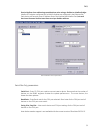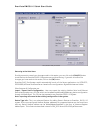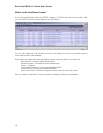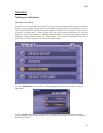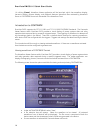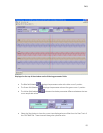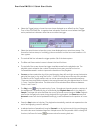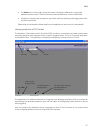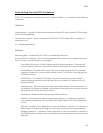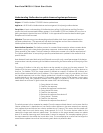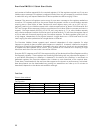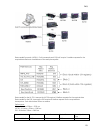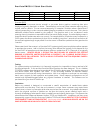
EnerVista PMCS 6.15 Quick Start Guide
Understanding Modbus device update times and system performance
Subject: GE Multilin Modbus TCP/IP/RTU device update times
Applies to: All GE Multilin Modbus devices and most generic (third party) modbus devices
Perquisites: A basic understanding of Modbus devices, polling, Multilin devices and the Enervista
product line (and its associated Modbus masters). Since Modbus TCP/IP and Modbus RTU are, from a
polling standpoint, identical the term “MODBUS” in this appnote will be used to describe both types.
Exceptions to this will be noted.
Objective: There are many misunderstandings about Modbus, both how it operates and how to
calculate update times. This appnote will help both the integrator and end user understand the
Modbus protocol and help them to calculate update times.
Basic Modbus Operation: The Modbus protocol is a master/slave transaction where a master device
generates a query and a slave device generates a response. A slave should never give a response
unless queried by the master. The time it takes for the device to answer is the "device response time".
The "device update time" is how quickly a specific queried data set is updated in the master for that
specific device.
Note: Network baud rates (both serial and Ethernet) account for only a small percentage of the device
response time. Internal processing of the Modbus command by the device takes up the majority of the
time.
The nature of Modbus is that only one device can be queried at a time on the same network. For
Modbus RTU the ‘same network’ is defined as a specific serial line (RS485/232) and all the devices on
that line. For Modbus TCP/IP the ‘same network’ is defined as a specific IP address (UR, Multinet, etc.)
and the IPport associated with that IP address. If the ‘same network’ has only one device on it than
the "device response time" and the "device update time" should be roughly equal. What if there are
multiple devices on the ‘same network’? If the master needs to query all the devices it must query
them one at a time. Let's suppose a network has 3 devices on it (device A, B and C) and the master
needs data from all three. To get this data the master MUST do the following:
1. Query device A for data,
2. Listen for the response
3. receives the response from device A
4. Query device B for data,
5. Listen for the response
6. Receives the response from device B
7. Query device C for data,
8. Listen for the response
9. Receives the response from device C
The whole process is then repeated as needed. From the steps outlined above it can be seen that the
"device update time" is dependent on how fast the other devices on the same network can respond.
Let's suppose that each device has a device update time of 1 second. This means that the master will
see fresh data from each device every three seconds (1+1+1=3). The more devices added to the
network the longer each device's update time! Ten devices on the same network means an update
time of 10 seconds (assuming each device takes 1 second to respond). The complete update cycle on
the same network is also called the ‘round robin’ time. The more devices on a serial line the longer the
overall device update time on that line (assuming each device is polled for data).
20



